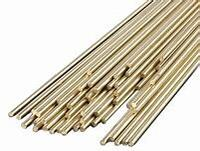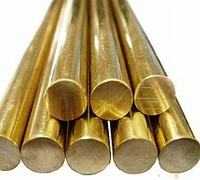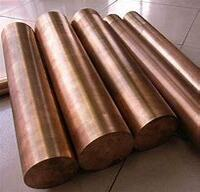1. Introduction
Just 24 hours ago, a major tech campus in Texas reported a near-miss lightning strike that was safely diverted thanks to a robust copper-based earthing system—highlighting how often-overlooked components like the copper earth rod play life-saving roles in modern infrastructure. While copper rods might seem like simple metal sticks, their engineered variants are indispensable in high-stakes applications ranging from data center grounding to precision HVAC assembly.

In this article, we’ll dive into two niche but vital uses of copper rod: electrical earthing systems and copper-to-copper joining in air conditioning pipework. We’ll also touch on related materials like copper strip and copper round bar, plus practical considerations like earthing rod price and the best way to strip copper wire for recycling.
2. Copper Rod in Advanced Electrical Earthing Systems
2.1. Why Copper for Earthing?
Copper’s unmatched conductivity and corrosion resistance make it ideal for grounding. A copper earth rod—also called an earthing rod copper or ground rod copper—is driven deep into the soil to create a low-resistance path for fault currents or lightning surges.
Pure copper rods offer the best performance but come at a premium. That’s where alternatives like copper bonded earthing rod or copper clad steel earth rod shine. These combine a steel core for strength with a thick copper layer (typically 0.25mm or more) for conductivity—offering 80% of pure copper’s performance at half the copper rod price.
2.2. Material Choices and Pricing
Engineers often choose between solid copper rod, copper bonded steel, and copper clad ground rod based on soil conditions, lifespan requirements, and budget. For instance, a copper bonded ground rod is perfect for rocky terrain where mechanical strength matters.

- Solid rod copper: Highest conductivity, best for corrosive soils
- Copper bonded steel: Cost-effective, high tensile strength
- Copper clad steel ground rod: Uniform copper layer, excellent for long-term installations
Current earthing rod price varies widely—solid copper rods can cost 2–3× more than copper bonded options. Still, for critical infrastructure like hospitals or telecom hubs, the investment in pure copper earth rod is non-negotiable.
3. Copper Rod in HVAC: Precision Joining for Air Conditioning Systems
3.1. The Role of Copper Rods in AC Piping
Modern air conditioning systems rely on seamless copper tubing—15mm copper pipe, 22mm copper tube, and 3/4 copper tubing are common sizes. To assemble these lines, technicians use copper brazing rod or copper welding rod to join sections without leaks.
Unlike steel, copper doesn’t oxidize easily when heated properly, making copper to copper brazing rods the go-to for reliable, high-integrity joints in aircon copper pipe systems. These rods melt at lower temps than the base metal, flowing into gaps via capillary action during copper pipe soldering.

3.2. Best Practices for Copper Rod Welding
When performing copper rod welding—especially on air conditioner copper pipe—it’s crucial to use the right filler. A copper to copper welding rod ensures metallurgical compatibility. Many pros prefer phosphorus-deoxidized copper rods for AC work, as they don’t require flux.
Key tips:
- Clean pipe ends thoroughly before resoldering copper pipe
- Use proper flame control to avoid overheating thin 1/2 copper tubing
- Match rod diameter to pipe thickness—e.g., 1.6mm copper rod for welding 15mm pipe
The ac copper pipe price includes not just tubing but also fittings and labor—so using the right copper rod for welding reduces rework and boosts system longevity.
4. Beyond Rods: Copper Strip and Recycling Considerations
4.1. Copper Strip in Earthing and Shielding
While rods handle vertical grounding, flat copper strip—like 25x3mm copper earth strip—distributes current horizontally in grounding grids. Variants include beryllium copper strip for spring contacts and nickel plated copper strip for corrosion resistance.
You’ll also find copper strip wire in EMI shielding, copper roof strip for architectural detailing, and even copper tape for snails in organic gardening (yes, really!). A 1mm copper strip or roll of copper strip is often stocked by electrical wholesalers—search “copper strip near me” for local suppliers.
4.2. Stripping and Recycling Copper
When HVAC systems or earthing grids are decommissioned, recycling copper is both eco-friendly and profitable. The best way to strip copper wire involves mechanical strippers—not burning copper wire for scrap, which releases toxic fumes.
- Use automatic strippers for long runs
- Manual tools work for stripping copper wire for scrap in small batches
- Avoid burning copper wire for scrap—it’s illegal in many areas and devalues the metal
Stripping wire for recycling yields clean copper that can be melted into copper ingot or rolled into new copper round bar. With 1oz copper price hovering near historic highs, efficient recovery pays off.
5. Conclusion
From safeguarding skyscrapers with a copper clad earth rod to enabling leak-free aircon copper tube joints with a precision copper brazing rod, specialty copper rods are unsung heroes of modern engineering. Whether you’re comparing copper rod price for a grounding project or choosing between copper bonded vs. solid rod copper, understanding these niche applications ensures smarter, safer, and more sustainable builds.
Our Website founded on October 17, 2012, is a high-tech enterprise committed to the research and development, production, processing, sales and technical services of ceramic relative materials such as Copper. Our products includes but not limited to Boron Carbide Ceramic Products, Boron Nitride Ceramic Products, Silicon Carbide Ceramic Products, Silicon Nitride Ceramic Products, Zirconium Dioxide Ceramic Products, etc. If you are interested, please feel free to contact us.

